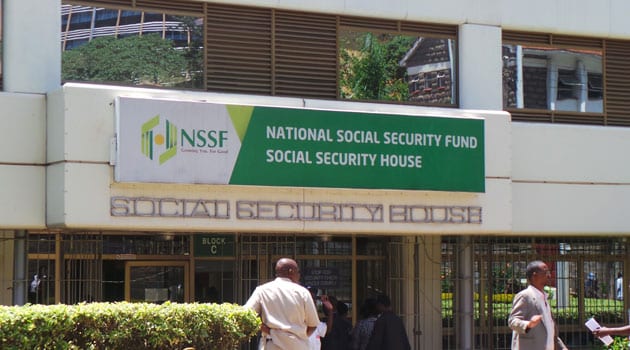On May 20, 2025, the National Social Security Fund (NSSF) of Kenya issued a press statement addressing an attempted cyber intrusion targeting its image storage system. The incident, which sparked widespread concern among its over 2 million members and stakeholders, underscores the growing threat of cyberattacks on critical financial institutions in Kenya’s digital economy. As a statutory body established under the National Social Security Fund Act No. 45 of 2013, NSSF is entrusted with safeguarding the retirement, survivor, and invalidity benefits of Kenyan workers. The fund’s swift response and assurance that no personal or financial data was compromised have reassured members, but the event highlights the need for robust cybersecurity measures in an era of escalating digital risks.
Background of the NSSF Cyber Intrusion Attempt
The NSSF announced on May 20, 2025, that its image storage system was targeted in an attempted cyber intrusion. While the press statement did not specify the nature of the attack—whether ransomware, phishing, or another method—posts on X suggested a possible ransomware breach with attackers demanding $4.5 million to prevent data exposure on the dark web. However, these claims remain unverified, and NSSF’s official statement emphasizes that the core system, which houses member data and financial transactions, was unaffected.
Key Details of the Incident:
- Date Reported: May 20, 2025.
- Target: Image storage system, a non-critical component separate from member data and financial systems.
- Impact: No evidence of compromised personal or financial member data, per ongoing investigations.
- Response: NSSF issued a press statement and is collaborating with cybersecurity experts to investigate and strengthen systems.
The incident occurs amid a global surge in cyberattacks, with Kenya’s financial sector increasingly targeted. Microsoft’s 2025 partnership with Kenya’s National Computer and Cybercrime Coordination Committee (NC4) highlights the country’s proactive stance on cybersecurity, yet vulnerabilities persist. This event underscores the challenges of securing sensitive data in a digital-first world.
NSSF’s Role and Importance in Kenya
The National Social Security Fund is a cornerstone of Kenya’s social security framework, providing benefits to millions of workers across formal and informal sectors. Established under the NSSF Act of 2013, the fund replaced the earlier 1965 legislation to expand coverage and enhance benefits. With a membership exceeding 2 million and assets under management worth over Ksh 300 billion (NSSF Annual Report, 2024), NSSF is a critical financial institution, supporting retirement planning, survivor benefits, and invalidity coverage.
Core Functions of NSSF:
- Retirement Benefits: Monthly contributions from employees and employers fund pensions for retirees.
- Survivor Benefits: Financial support for dependents of deceased members.
- Invalidity Benefits: Payments for members unable to work due to permanent disabilities.
- Member Services: Online portals for contribution tracking, benefit claims, and account management.
NSSF’s commitment to “excellence” and “long-term sustainability” makes it a trusted provider, but its vast database of personal and financial information also makes it a prime target for cybercriminals. The 2025 cyber attempt highlights the stakes involved in protecting this data.
Details of the Cyber Intrusion Attempt
The attempted intrusion targeted NSSF’s image storage system, a peripheral component used for storing non-sensitive data such as scanned documents or images. According to the press statement, the core system—housing member details like names, ID numbers, contribution records, and financial transactions—remained secure. NSSF’s ongoing investigation, supported by internal IT teams and external cybersecurity experts, found no evidence of data breaches or extraction.
What We Know:
- Scope: The attack was limited to the image storage system, not the main database.
- No Data Loss: Preliminary findings confirm no personal or financial data was compromised.
- Response Time: NSSF detected and addressed the attempt promptly, issuing a public statement on May 20, 2025.
- Unverified Claims: Posts on X alleged a ransomware attack with a $4.5 million demand, but NSSF has not confirmed this, and such claims are inconclusive without official validation.
The incident aligns with global cybersecurity trends. For instance, a May 2025 cyberattack on Coinbase, a U.S. crypto exchange, resulted in a potential $400 million loss, while M&S in the UK faced supply chain disruptions from a similar attack. Kenya’s advanced cybersecurity framework, bolstered by the 2018 Computer Misuse and Cybercrimes Act and the National Kenya Computer Incident Response Team (KE-CIRT/CC), likely aided NSSF’s rapid response.
NSSF’s Response and Member Reassurance
NSSF’s press statement on May 20, 2025, demonstrates a proactive approach to crisis communication and member reassurance. The fund emphasized its commitment to “data protection, integrity, and transparency,” outlining several measures to address the incident and prevent future risks.
NSSF Kenya Cyber Intrusion Response Measures 2025
Committed to sharing findings to improve sector-wide resilience.
Immediate Investigation:
Launched a comprehensive probe with internal IT teams and external cybersecurity experts.
Focused on assessing the intrusion’s scope and confirming data integrity.
System Security Confirmation:
Verified that the core system, containing member data and financial records, was unaffected.
Conducted audits to ensure no unauthorized access occurred.
Public Communication:
Issued a press statement within hours of detecting the attempt, reassuring members and stakeholders.
Provided contact details (020 283 2030/2951, PR@nssfkenya.co.ke) for inquiries.
Enhanced Cybersecurity Measures:
Strengthened firewalls, encryption, and intrusion detection systems.
Planned staff training on phishing and cyber threat awareness.
Collaboration with Authorities:
Engaged with KE-CIRT/CC and NC4 to align with national cybersecurity protocols.
NSSF’s swift action contrasts with slower responses in other 2025 cyberattacks, such as M&S’s prolonged recovery, highlighting the fund’s preparedness. Members are encouraged to monitor their accounts via the NSSF online portal and report suspicious activity to PR@nssfkenya.co.ke.
Is Your Data Safe? Understanding NSSF’s Security Protocols
NSSF’s assurance that no personal or financial data was compromised is grounded in its robust cybersecurity infrastructure. The fund employs industry-standard protocols to protect its systems, which are critical given its management of sensitive member information.
NSSF’s Data Security Measures:
- Encryption: Member data is encrypted both in transit and at rest, preventing unauthorized access.
- Firewalls and Intrusion Detection: Advanced systems monitor and block suspicious activities in real-time.
- Segregated Systems: Non-critical systems like image storage are isolated from core databases, limiting attack surfaces.
- Regular Audits: Periodic security assessments identify and address vulnerabilities.
- Compliance: Adherence to the Data Protection Act 2019 and international standards like ISO 27001.
The separation of the image storage system from the core database was pivotal in containing the 2025 attempt. Kenya’s cybersecurity landscape, rated “partly free” with a 64/100 score by Freedom House (2024), supports such measures through KE-CIRT/CC and the 2018 Computer Misuse and Cybercrimes Act. However, unverified X posts claiming a ransomware demand suggest public skepticism, necessitating ongoing transparency from NSSF.
Broader Implications for Kenya’s Financial Sector
The NSSF cyber intrusion attempt reflects a global and local rise in cyber threats targeting financial institutions. In 2025, Kenya’s digital economy—valued at $5 billion (World Bank, 2024)—faces increasing risks, with cyberattacks costing businesses Ksh 30 billion annually (Communications Authority of Kenya, 2024). The incident has significant implications for NSSF, its members, and the broader financial sector.
Impact on NSSF Members
- Trust and Confidence: While NSSF’s assurance of data safety is reassuring, unverified ransomware claims may erode trust, requiring sustained communication.
- Service Continuity: No disruptions to contribution payments or benefit claims have been reported, ensuring member access to services.
- Awareness: Members are now more vigilant, prompted to use secure passwords and monitor accounts.
Impact on NSSF Operations
- Reputation Management: NSSF’s proactive response mitigates reputational damage, but it must counter misinformation on platforms like X.
- Cost of Response: Investigations, system upgrades, and training may increase operational costs, potentially affecting contribution rates.
- Policy Updates: The incident may prompt stricter cybersecurity policies and member education campaigns.
Sector-Wide Implications
- Heightened Vigilance: Other financial institutions, like the Central Bank of Kenya or commercial banks, may enhance their cybersecurity protocols.
- Regulatory Push: The NC4 and Communications Authority may tighten regulations, as seen with Italy’s $5.6 million fine on an AI firm in 2025.
- Public-Private Collaboration: Microsoft’s ARC Initiative with NC4 could expand to include financial institutions like NSSF, fostering regional cybersecurity resilience.
The incident underscores the need for a multi-stakeholder approach, as advocated by Kenya at the East Africa Internet Governance Forum.
Cybersecurity Trends in Kenya 2025
Kenya is a regional leader in cybersecurity, with policies like the 2014 KE-CIRT/CC and 2024 Cyber Security Operations Centre (CSOC) strengthening its defenses. However, the NSSF incident aligns with global trends, as seen in 2025 cyberattacks on Coinbase and UnitedHealth. Below are key trends shaping Kenya’s cybersecurity landscape:
- Ransomware Surge: Ransomware attacks, like the alleged NSSF case, are rising, with 70% of global organizations affected in 2024 (Symantec, 2024).
- Zero-Day Exploits: Microsoft’s patching of 78 flaws in May 2025 highlights the risk of zero-day vulnerabilities, which could target Kenyan systems.
- Digital Economy Growth: Kenya’s fintech and e-government platforms, like NSSF’s online portal, are prime targets due to their data-rich nature.
- Regulatory Evolution: The 2018 Computer Misuse and Cybercrimes Act is under review to address emerging threats like AI-driven attacks.
- Public Awareness: Campaigns by NC4 and private firms are educating citizens on phishing and secure online practices.
These trends emphasize the urgency of proactive cybersecurity investments, as demonstrated by NSSF’s response.
What Members Should Do
NSSF members can take proactive steps to protect their accounts and stay informed about the incident:
- Monitor Accounts:
- Log in to the NSSF online portal at nssfkenya.co.ke to verify contribution records and account status.
- Report discrepancies to PR@nssfkenya.co.ke or 020 283 2030.
- Strengthen Security:
- Use strong, unique passwords for NSSF accounts and enable two-factor authentication where available.
- Avoid sharing personal details via email or unverified platforms.
- Stay Informed:
- Follow NSSF’s official channels (@NSSF_KE on X, website updates) for verified information.
- Ignore unverified claims, such as the $4.5 million ransomware demand, unless confirmed by NSSF.
- Report Suspicious Activity:
- Contact NSSF immediately if you receive phishing emails or suspicious calls claiming to be from the fund.
- Report cyber threats to KE-CIRT/CC at cirt.go.ke.
- Educate Yourself:
- Attend NSSF’s upcoming member education sessions on cybersecurity, announced via the website.
- Learn about phishing and ransomware through NC4’s public resources.
Lessons for Kenyan Businesses and Institutions
The NSSF incident offers valuable lessons for Kenya’s financial and public sectors:
- Invest in Cybersecurity: Allocate budgets for advanced firewalls, encryption, and threat detection systems, as NSSF did.
- Segregate Systems: Isolate non-critical systems to minimize attack impacts, a strategy that protected NSSF’s core database.
- Train Staff: Regular training on phishing, malware, and secure practices reduces human error, a common attack vector.
- Communicate Transparently: Prompt, clear communication, like NSSF’s press statement, maintains stakeholder trust.
- Collaborate Nationally: Partner with NC4, KE-CIRT/CC, and private firms like Microsoft to share threat intelligence.
These measures can help institutions like banks, insurance firms, and government agencies stay resilient against cyber threats.
Future Outlook for NSSF and Cybersecurity
NSSF’s handling of the 2025 cyber intrusion attempt positions it as a model for crisis management, but ongoing vigilance is essential. The fund is likely to implement additional safeguards, such as:
- AI-Driven Threat Detection: Leveraging AI to identify and neutralize threats in real-time.
- Member Education Campaigns: Expanding outreach to teach members about secure online practices.
- System Upgrades: Enhancing encryption and cloud security for its online portal and mobile app.
- Partnerships: Deepening collaboration with NC4 and global tech firms to adopt best practices.
Kenya’s cybersecurity ecosystem is poised for growth, with Microsoft’s ARC Initiative and CSOC setting the stage for regional leadership. By learning from incidents like NSSF’s, the country can strengthen its defenses, ensuring trust in digital financial systems.





